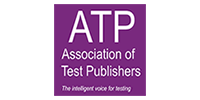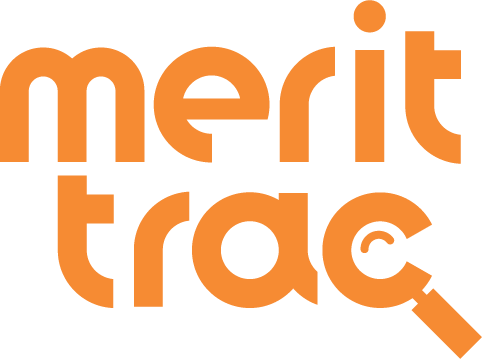Design Thinking Test
Design Thinking Test is a problem-solving approach that emphasizes understanding users' needs, rapid prototyping, and iteration. It involves a series of steps, such as empathizing with users, defining the problem, ideating potential solutions, prototyping and testing them. Design Thinking Test is used to create innovative and effective solutions to complex problems, particularly in the fields of product design, service design, and user experience design. It is widely used by companies, startups, and design agencies to develop products and services that meet the needs and expectations of their users.
Stages of Design Thinking Exam
Here are the 3 stages of MeritTrac’s design thinking assessment
- Clarify:The first stage of the design thinking assessment by MeritTrac is clarification, which aims to test an individual's ability to define a problem and gather relevant information. Candidates are evaluated based on their ability to understand user needs, generate creative solutions, develop prototypes, and test and iterate on those solutions based on user feedback. Organisations commonly use design thinking exams to assess candidates for roles that require innovative thinking and problem-solving skills, such as product design, user experience design, and innovation management.
- Develop:Develop is the second stage of MeritTrac's Design Thinking Exam, which focuses on an individual's ability to generate and develop ideas. In this stage, the exam assesses a candidate's creativity, knowledge to brainstorm and prototype, and problem-solving skills. Candidates are evaluated on their ability to iterate on ideas and incorporate feedback from users and stakeholders.
- Implement:Implement is the final stage of MeritTrac's Design Thinking Exam, which evaluates an individual's ability to turn ideas into action. The creativity test assesses a candidate's ability to implement ideas practically, effectively, and user-centred manner. It also evaluates their ability to communicate and collaborate in a team environment.
Design Thinking Mcqs
These are the sample design thinking mcq for hiring by MeritTrac
Q1. What is Design Thinking?
- A process for creating software applications
- A creative problem-solving approach
- A design methodology for industrial products
- A project management methodology
Ans: b. A creative problem-solving approach
Q2. Which of the following is not a stage in the Design Thinking process?
- Empathize
- Define
- Ideate
- Appraise
Ans: d. Appraise
Q3. What is the first stage in the Design Thinking process?
- Define
- Ideate
- Empathize
- Prototype
Ans: c. Empathize
Q4. Which stage of the Design Thinking process involves generating a large quantity of ideas?
- Empathize
- Define
- Ideate
- Prototype
Ans: c. Empathize
Q5. Which of the following is not a principle of Design Thinking?
- Human-centeredness
- Bias towards action
- Collaboration
- Embrace uncertainty
Ans: d. Embrace uncertainty
Q6. In Design Thinking, what is a prototype?
- A functional product
- A blueprint for a product
- A test version of a product
- A conceptual model of a product
Ans: c. A test version of a product
Q7. What is the goal of Design Thinking?
- To create visually appealing products
- To solve complex problems
- To minimize production costs
- To maximize profits
Ans: b. To solve complex problems
Q8. Which of the following is not a characteristic of Design Thinking?
- Iterative
- Collaborative
- Ideate
- Prototype
Ans: c. Linear
Q9. Which of the following is not a characteristic of Design Thinking?
- Empathize
- Define
- Linear
- Prototype
Ans: d. Prototype
Q10. Which of the following industries has widely adopted Design Thinking as a problem-solving approach?
- Automotive
- Healthcare
- Banking
- All of the above
Ans: d. All of the above
Benefits of the Design Thinking exam
Let’s explore some benefits of using MeritTrac’s design thinking test for your needs.
- Creative Problem-Solving:Design thinking is a problem-solving approach emphasising empathy, experimentation, and iteration. By understanding users' needs, generating multiple ideas, and testing and refining solutions, design thinking can help teams approach problems with a creative and innovative mindset, leading to more effective and impactful solutions.
- Identify the issue's fundamental cause:One of the benefits of design thinking is that it helps teams avoid simply treating the symptoms of a problem and instead focus on uncovering the fundamental cause of the issue. Using a human-centred approach to problem-solving, design thinking can lead to more effective and sustainable solutions that address the underlying causes of problems rather than just treating the surface-level symptoms.
- It enables you to increase your knowledge continuously:Design thinking fosters a culture of continuous learning and improvement. By encouraging experimentation and iteration, teams can gain insights and knowledge throughout the problem-solving process. This ongoing learning and discovery can lead to more effective solutions and a deeper understanding of user needs and behaviours, which can inform future projects and initiatives.
Applications of Design Thinking test
Let’s explore some of the practical applications of design thinking tests.
- Business:Design thinking can help businesses develop innovative solutions by focusing on user needs, rapid iteration, and empathy-driven problem-solving
- Information Technology:Design thinking in information technology can help teams break down silos and encourage collaboration across different departments and stakeholders, leading to more holistic and integrated solutions.
- Education:Test in design thinking can be a valuable tool for educators seeking to create more effective and engaging learning experiences for their students.
- Healthcare:By focusing on specific user needs and pain points and developing targeted solutions through rapid prototyping and testing, design thinking can help healthcare providers create more efficient and effective systems and processes that improve patient outcomes.
Advantage of choosing MeritTrac for the Design Thinking Exam
MeritTrac offers a comprehensive and customisable design thinking test that can be tailored to meet the specific needs of any organisation.
With a team of experienced professionals and advanced testing technology, MeritTrac can provide accurate and reliable assessments of candidates' design thinking skills, helping companies make informed hiring and training decisions.
FAQ
FAQ
1. Why Design Thinking Test is Important?
A. A test in a design thinking context is important as it provides an objective and structured way to assess individuals' problem-solving abilities and creative thinking skills. It can help organisations identify candidates with the right mindset and approach to problem-solving, enabling them to make informed hiring and training decisions. Moreover, tests can provide valuable feedback and insights to inform ongoing learning and development.
2. How do you Validate The Design Thinking Test?
A. To validate a design thinking test, it is essential to establish the reliability and validity of the assessment. This can be achieved through various methods, such as conducting item analysis, establishing inter-rater reliability, and using statistical analyses to ensure the test produces consistent and accurate results. Additionally, feedback from test-takers and subject matter experts can be used to refine and improve the assessment over time.
3. Is Design Thinking a Tool for Problem-Solving?
A. Yes, design thinking is a human-centred problem-solving approach that can be used to tackle a wide range of complex challenges. It involves empathising with users, defining problem areas, ideating potential solutions, prototyping and testing them, and implementing the most effective solution.
4. How can I Prepare for a Design Thinking Test?
A. Some ways to prepare for a design thinking test might include practicing brainstorming and idea generation, reading up on design thinking methodologies and case studies, and familiarizing yourself with prototyping tools and techniques.
5. Who Might Take a Design Thinking Test?
A. Design thinking tests might be used as part of a job interview process for positions related to design, product development, or innovation. They might also be used in academic settings to assess students' understanding and application of design thinking principles.


 Sales Hotline: USA: +1 646 916 0939 / Others: +91 80619 14700
Sales Hotline: USA: +1 646 916 0939 / Others: +91 80619 14700


